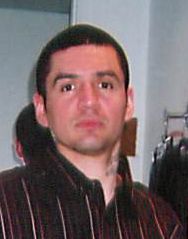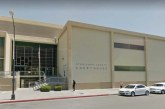
The prosecution in the Topete trial now appears to be attempting to tear away at the notion that Mr. Topete was drunk when he led Deputy Tony Diaz on a high-speed chase that culminated in the fatal shooting.
Mr. Palecek testified that when Mr. Topete was arrested, he registered a blood alcohol level of 0.00 and further tests confirmed that he had no alcohol in his system at this point.
He testified that the burnoff rate is approximately .018 percent per hour and that he was tested 11.5 hours after the incident.
He testified that he has really nothing but speculation to base this on, but he calculated the defedant’s maximum blood alcohol level at the time of the incident to have been .20. However, he stated it was likely considerably less; they simply do not have the information to be more precise.
Mr. Palecek was asked if someone could navigate the course that Mr. Topete took, driving at speeds exceeding 100 mph, making hairpin turns and a U-turn.
Mr. Palecek said he would be surprised if he could navigate the course at that level without serious risk and likelihood for an accident. He said he would have issues with the high-speed turns, among other things.
He testified that his experience observing drivers on the closed test course showed people having trouble maintaining the course, even at much slower speeds, with a blood alcohol level of 0.08, the legal limit.
In his opinion, for someone to drive without issue would be highly unlikely, and therefore he questioned whether Mr. Topete really had a high level of intoxication.
Under cross-examination, Mr. Palecek said that someone at the hypothetical blood alcohol level of .20 could not safely operate his vehicle and he did not believe it would be possible for that person to successfully navigate the described course, especially driving at 100 mph of speed.
But he also testified that Mr. Topete would have been mentally impaired at a far lower level of alcohol than would result in physical impairment. Mental impairment, he testified, begins at the .01 level.
Further, the 2.0 blood alcohol level is certainly not known to be the case. Mr. Palecek testified that someone at the 0.08 level, who would be legally impaired, might be able to drive course, but he does not know for sure. He thought such a person would have had trouble.
He testified that someone at the 0.08 level would probably have an accident, and he described the fact that, on the test course, people were driving at low rates of speed and were sometimes struggling to maintain at a mere 20 or 30 mph.
However, he again testified that at lower levels of alcohol Mr. Topete would have had impaired mental judgment and thinking.
Clearly, the prosecution at this point is trying to suggest that Mr. Topete was not drunk at all, as claimed, perhaps attempting to lend credence to the claim that the shooting was gang-motivated, rather than the outcome of an attempt to escape a parole violation and a third-strike charge for driving while intoxicated and endangering a child.
Last week, Angelique Topete, the wife of Marco Topete, testified that her husband was “completely drunk” and “passed out over the steering wheel.” He would not wake even as she opened the doors and slammed them.
He had driven slowly on the 505, north toward Arbuckle. But the couple quickly began arguing. She was angry that he was drinking with their daughter in the car. She was concerned about the baby’s safety and his judgment.
During the argument he laughed and said, “I’ll leave you here.” She responded, “Go ahead.”
She thought he was joking but he stopped the car and she got out, grabbed her purse and cell phone and left the baby in the car. She said it was her decision to stay at that spot.
The DA could be setting the stage to argue that her account conflicts with likely medical evidence. She herself described him as driving very slowly, which is a far cry from the high rate of speed that Mr. Topete drove when attempting to evade Deputy Diaz just two hours later, which should have only led to a 0.036 burnoff of alcohol from when Mrs. Topete saw him.
However, not elicited was the impact adrenaline might have on the body’s impairment. Also, no one asked whether the rate of burn-off would differ if the subject engaged in strenuous physical activity.
Earlier, the prosecution had attempted to continue to build their gang case, with the testimony of Tina Durham, an Elk Grove police officer who in 1996 was a Woodland police officer.
In 1996, she was shown photos she took at a park with Marco Topete and three other men, all at that time validated gang members. They had been confronted while they were playing handball and drinking beer. The photo shows Mr. Topete with a “Norte” tattoo and red boxers. She said his moniker was “Flaco.”
—David M. Greenwald reporting





0.00
0.018
2.0
0.08
a problem with decimal points (order of magnitude). The 2.0 you mention is no doubt 0.20 (2.5 times the legal limit for driving).
Might I suggest two-O when you are speaking the vernacular regarding a blood alcohol level of 0.20.
[b]Further, the 2.0 blood alcohol level is certainly not known to be the case. [/b]
Of course you meant to type .2 because I think you die at .4 – at least that is what I learned in Enology.
Its going to be interesting to see how this “ambush” theory plays out. In my “expert” opinion (based on nothing more than countless TV and book police stories), I assume he would have not fled the truck stop to set up the ambush. If he was really out to shoot a police officer he would have done it at the truck stop where he could have taken time to set up the ambush. He could have parked the car near an area of cover and simply waited for a police officer to drive up and inspect the car in a defenseless manner.
But from what I read in the Davis Enterprise the reason Diaz was chasing Topete in the first was because “A woman in Davis had reported the vehicle to police, saying she had seen the driver, who appeared to be intoxicated, leaving a local park with a baby in the car. The license-plate number showed the car was registered to Topete, prosecutors said.” Now granted that’s not proof that he was drunk but it is a witness saying that it appeared that he was when she saw him.
The Sacramento Bee said “On June 15, 2008, a witness called 911 to report she had seen Topete drinking beer with other men in a Davis park and driving away with his baby in the car, the prosecutor said. The caller described the car and license plate number. Authorities issued a bulletin for Topete.”
Why is his state of drunkeness or sobriety important in a murder case? If he killed Diaz by shooting him with his gun, then he is a murderer whether he was sober or not.
Lack of drunkenness would help to prove the special circumstance of lying in wait. Adds more to potential sentencing. Sorry to everyone that I didn’t catch the typo – I had only a short while to go through the articles, then was unavailable the rest of the day.
He was drunk. His wife testified that he was smashed. As mentioned earlier, the woman in davis who saw him driving reported in her call that he was drunk….These are real people who seen it. They are witnesses. Now let’s see if the jury believes and “expert” who was not there, did not withness anything but who is paid to say anything the DA wants him to whether it is actual or not.
Approximately what was the elapsed time between when Topete dropped off his wife and the shooting of the deputy? Was it about 2.5 hours?
Isn’t it true that the burn rate of alcohol in the bloodstream is not constant; but depends on the level of alcohol in the blood? (i.e. burns quicker at higher alcohol levels and slower at lower alcohol levels).
Yes, a two-phase burnoff rate.
[i]”Lack of drunkeness would help to prove the special circumstance of lying in wait. Adds more to potential sentencing.”[/i]
You don’t need a special circumstance of “lying in wait,” because the victim was a peace officer. However, perhaps you meant to say that “lying in wait” is a component which moves this murder from second degree to first degree?
Here is the relevant part of the California Penal Code: [quote] SECTION 190.2. DEATH PENALTY OR LIFE IMPRISONMENT WITHOUT PAROLE; SPECIAL CIRCUMSTANCES.
SECTION 1. The penalty for a defendant who is found guilty of murder in the first degree is death or imprisonment in the state prison for life without the possibility of parole if one or more of the following special circumstances has found under Section 190.4, to be true:
(7) The victim was a peace officer as defined in Section 830.1, 830.2, 830.3, 830.31, 830.35, 830.36, 830.4, 830.5a, 830.6, 830.10 or 830.12, who, while engaged in the course of the performance of his or her duties was intentionally killed, and such defendant knew or reasonable should have known that such victim was a peace officer engaged in the performance of his or her duties; or the victim was a peace officer as defined in the above-enumerated sections, or a former peace officer under any of those sections, and was intentionally killed in retaliation for the performance of his or her official duties. [/quote] As to first or second degree, I cannot imagine that being drunk in and of itself would remove the possibility of the killer “lying in wait.” It seems to me that the drunk guy is as likely, if not more likely, to have lain in wait.
[quote]Its going to be interesting to see how this “ambush” theory plays out. In my “expert” opinion (based on nothing more than countless TV and book police stories), I assume he would have not fled the truck stop to set up the ambush. If he was really out to shoot a police officer he would have done it at the truck stop where he could have taken time to set up the ambush. He could have parked the car near an area of cover and simply waited for a police officer to drive up and inspect the car in a defenseless manner. [/quote]
LYING IN WAIT
Being in ambush for the purpose of murdering or harming another. A waiting and watching for an opportune time to act, together with a concealment by ambush or some other secret design to take the other person by surprise.
[b]The lying in wait need not continue for any particular period of time provided that its duration is such as to show a state of mind equivalent to premeditation or deliberation.[/b]
Lying in wait is evidence of deliberation, malice and intention and so is often used as a special circumstance to enhance sentencing in criminal cases.
…
[quote] He was drunk. His wife testified that he was smashed. As mentioned earlier, the woman in davis who saw him driving reported in her call that he was drunk….These are real people who seen it. They are witnesses. Now let’s see if the jury believes and “expert” who was not there, did not withness anything but who is paid to say anything the DA wants him to whether it is actual or not.[/quote]
Clearly you are not familiar with the issues relative to evidence, lay testimony and/or expert testimony.